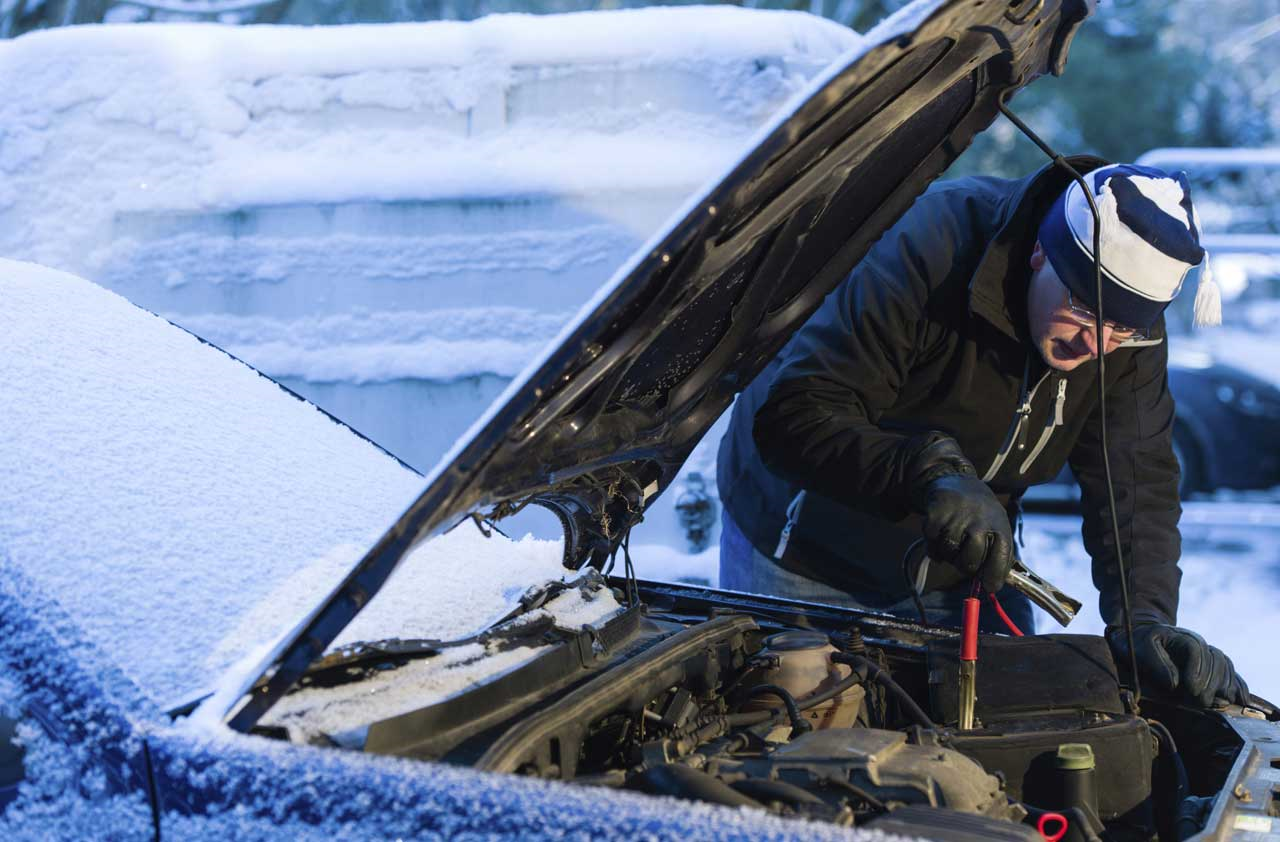Wintry weather can take its toll on cars and difficult driving conditions can catch you by surprise.
But with a bit of planning, you can ensure your car is ready for the winter weather.
Below we provide a run-down of essential maintenance tips.
1. CHECK YOUR OIL LEVELS AND DON’T GAMBLE WITH YOUR FUEL LIGHT
Check your oil level is between the minimum and maximum mark on your car’s dipstick. The RAC says one in three vehicles its patrols attend are dangerously low on oil[1], which can lead to a breakdown or engine damage. You should check the oil level once your car is fully warmed up. A cold car will look low on oil. Remember, too much oil can be as bad as too little.
You should check you have plenty of fuel in your tank, too. Don’t try and eek out the last few miles if your fuel light comes on. It might be nice and warm in your car, but it’s better to go out into the cold at a petrol station rather than end up stranded on the side of the road.
2. KEEP YOUR LIGHTS CLEAN
Cars get extremely dirty in winter months, not least because of all the salt on the roads. So it’s particularly important to keep your lights clean – you can just wipe them over with a cloth if your car doesn’t have headlamp washers.
You can lose an estimated 40% of luminosity in about 20 miles on a damp, gritted motorway, according to road safety charity IAM RoadSmart[2].
Wipe down your number plate too. You could face a fine if you drive around with an unreadable registration plate. Also, have someone stand outside the car and check all the lights work properly.
3. TEST YOUR BATTERY
A flat or faulty battery is the number one cause of vehicle breakdowns, according to both the RAC[3] and Green Flag[4], and the risk of battery failure is greater in cold, wet and icy weather.
Aim to change your car’s battery every three years if possible, or sooner if it’s causing you problems in the cold weather.
Green Flag says warning signs of battery failure include the engine turning over more slowly than usual when you start it. Also, the red battery light in the instrument display may flicker when you’re driving or take longer than usual to go out after you’ve started the engine.
4. PAY ATTENTION TO DASHBOARD WARNING LIGHTS
Many people don’t know what the warning lights on their dashboard mean – as we demonstrated in a street survey.
So with winter closing in, now would be a good time to get to know what all of these lights mean. And if one appears on your dashboard, get it checked out as soon as possible.
How well do you know the warning lights in your car? Test you knowledge with our quiz.
5. ASSESS YOUR TYRES
Worn tyres are dangerous at any time, but especially as stopping distances increase in icy, snowy or wet conditions.
Tyres need a minimum tread depth of 1.6mm by law, but experts recommend you change tyres at 3mm to maintain safe stopping distances[5]. Don’t forget to check you have a roadworthy spare too.
If you drive on rural or uneven roads, consider investing in some snow chains/socks or winter tyres.
6. CHECK WIPER BLADES AND TOP UP ON WINDSCREEN WASH
Check your wipers are in good condition, with no tears or holes, and can clean your windscreen properly. You can give them a wipe with a clean cloth every now and then. But, as Auto Windscreens warns, don’t pull wiper blades off frozen glass or turn them on if the screen is iced over, as the rubber may tear.
You’ll need plenty of washer fluid too – it’s surprising how often you need to do this in the winter when wet, muddy or salty roads increase the amount of spray hitting your windscreen. Not only is it dangerous to not have fluid in a vehicle’s screen washer bottle, it’s illegal too.
7. TOP UP ANTIFREEZE
Antifreeze stops the water in the engine’s cooling system from freezing, so make sure yours is topped up.
Coolant should be changed every 2 – 5 years, depending on the car and the type of coolant required.
8. CHECK IF YOUR CAR IS DUE A SERVICE
Like many of the tips above, this is important all year-round, but winter just makes it that bit more urgent.
A service is usually recommended every 12,000 miles or every 12 months, whichever comes sooner. But every car is different, so check your owner’s handbook for the manufacturer’s recommended service schedule. In some areas, it can take a couple of weeks for the garage to fit you in for a service, plan ahead and make sure you’re booked in in good time.
9. CHECK YOUR BRAKES
Your brakes need to be in tip-top condition, especially in winter.
If they squeal, make other noises or generate unusual sensations, get them checked. If you’re taking your car out after a few days left unused in the cold, set off gently in case the discs, calipers or handbrake have frozen up.
10. CARRY THE RIGHT GEAR
Ensure you have the items below in your car, just in case:
– Ice scraper and de-icer
– Warning triangle
– Warm clothing and a blanket, rug or -sleeping bag
– Practical footwear like wellies
– Torch and batteries
– Mobile phone and charger


